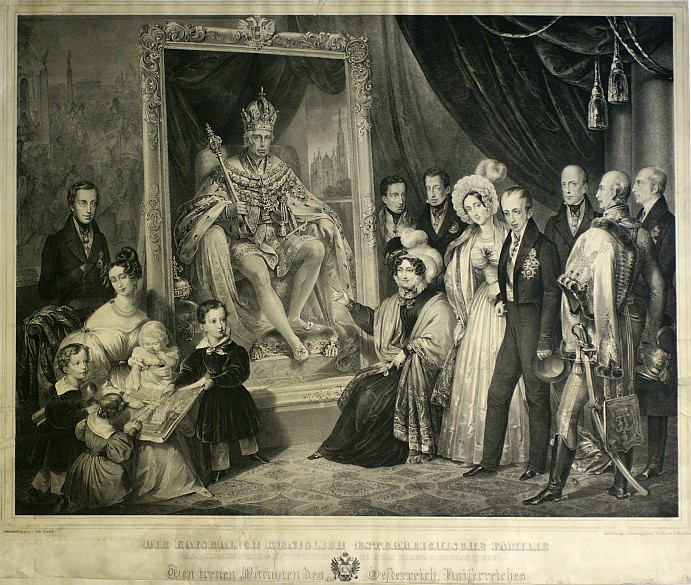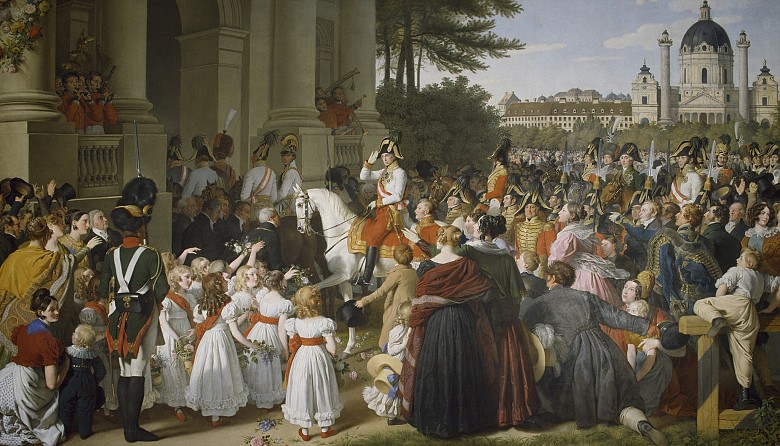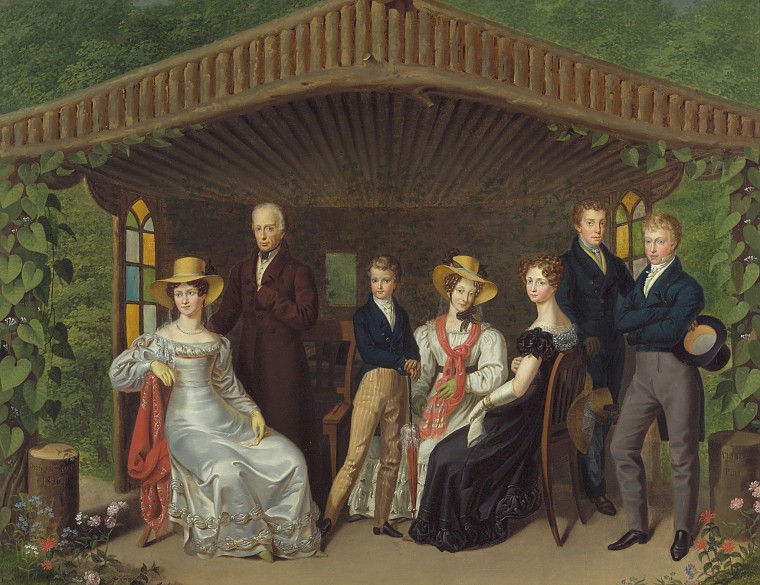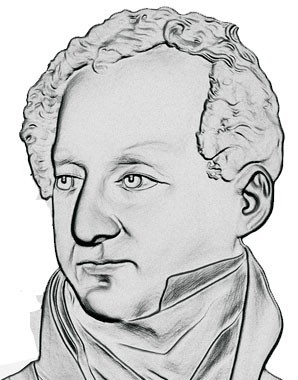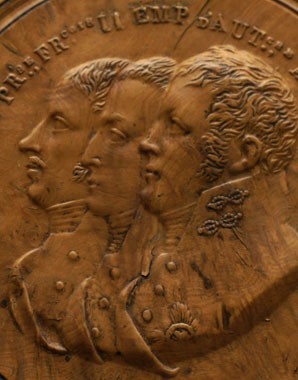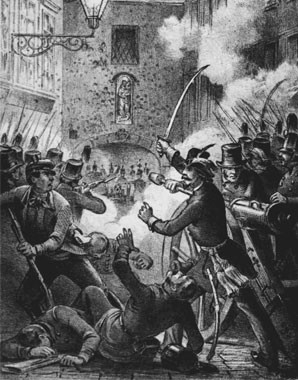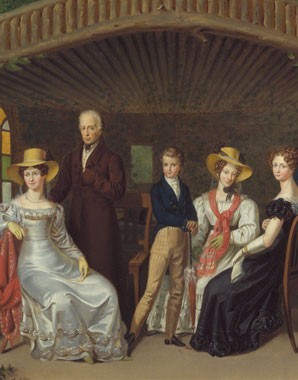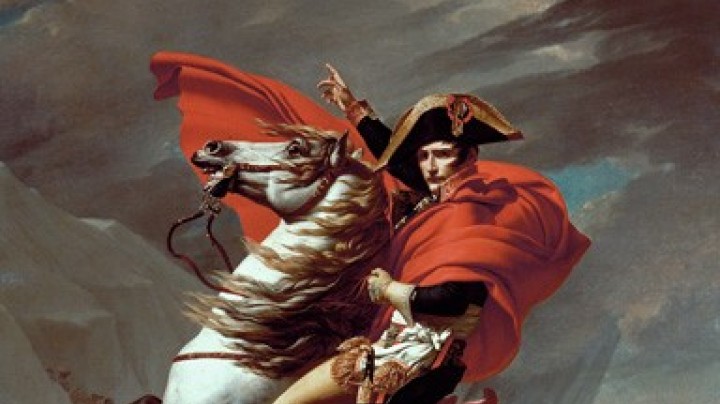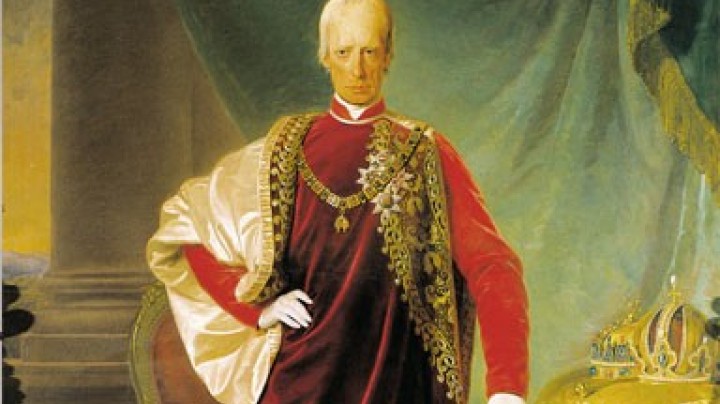Franz II (I) and the Metternich System
The ‘honourable’ Emperor, the allegedly ‘good old’ Emperor Franz and his police state – his reign is inseparably associated with the name of Metternich.
The imperial family, gathered together in front of the portrait of Emperor Franz I of Austria – the painting was intended to convey the family idyll and the unity of the dynasty under the ‘good Emperor’ Franz. Given the repression during his reign, the present-day mind finds it difficult to understand how he could ever have been deemed worthy of this flattering appellation. The explanation is presumably that the conservative measures taken under his rule are linked with the name Metternich and that the Emperor, by contrast with his chancellor, has acquired the image of an upright family man. This representation of the ruler reflects the family ideal of the age of the middle classes and the cliché of withdrawal into the private sphere. However, the Emperor’s general views were quite in accord with Metternich’s anti-liberal and anti-intellectual stance – both were actively opposed to any changes in the system of rule.
Nevertheless, some historians have relieved Emperor Franz of responsibility by idealizing him as the ‘honest Emperor, close to the people’.
The image of Franz I as an amiable ruler was also propagated through art, as is shown by the painting Emperor Franz II (I) entering Vienna on 16 June 1814 after the Treaty of Paris executed in 1828–1832 by Johann Peter Krafft for the central hall of the Imperial Chancellery Wing (Reichskanzleitrakt) of the Hofburg: it shows the ‘good Emperor’ surrounded by his people following the conclusion of the ‘world peace’ with Napoleon.
The ‘good Emperor’ Franz was succeeded by his son Ferdinand, who suffered from epilepsy and on account of his physical and mental shortcomings was widely regarded as unfit to rule.
The ‘Metternich System’ – the expression with which the period is closely linked on account of the dominant role played in it by the State Chancellor – was based on the suppression of all endeavours of a democratic, liberal or national nature and was maintained through censorship, the police state and a network of informers. In fact, many practices of the police and information service were in fact adopted by Emperor Franz from his predecessors. Culturally, the period is referred to as the Biedermeier era, after a movement and style often idealized as a Romantic tendency towards tranquil introspection. More critical minds see the Pre-March (Vormärz) period between the Congress of Vienna of 1815 and the March Revolution of 1848 as an idyll only in appearance.
